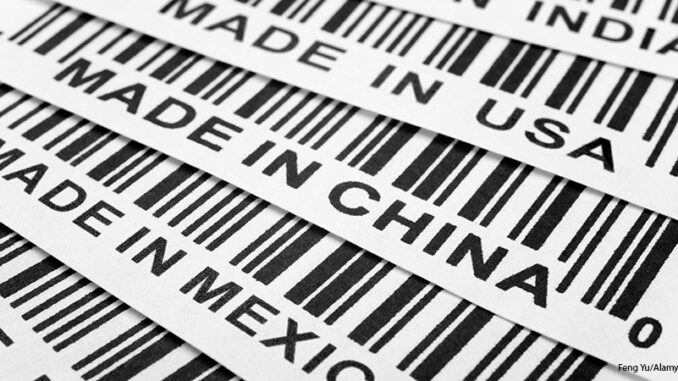
Power Company to Blame for California Wildfires
Last December, btw brought you the story of the recent California wildfire, the Camp Fire, that was more deadly than California’s other seven worst wildfires combined. The Camp Fire killed at least 86 people, destroyed roughly 18,500 structures, and nearly leveled the town of Paradise, California. Now, the accountable party is being held responsible. Utility company Pacific Gas and Electric (PG&E) has filed for bankruptcy after facing billions of dollars in lawsuits from the recent bout of wildfires. Moreover, last week, a federal judge in California accused the company of not prioritizing customer safety, and of allowing trees to grow too close to its power lines, which is a cause of wildfires. Earlier this month, the judge ordered PG&E to improve its safety measures in two weeks by:
- not using unsafe power lines during the 2019 wildfire season;
- trimming or removing trees that could fall onto the power lines; and
- reinspecting its power grid.
PG&E responded quickly, saying that the suggested safety changes could cost up to $150 billion and weren’t economically feasible. It also claimed that it couldn’t find enough qualified tree trimmers to get the job done in such a short time period. The company has already retired three of its executives in response to the crisis, and has started to look at selling off some of its real estate holdings to help pay for damages from suits brought against them as a result of the fire. The judge did not insist that the proposed changes happen immediately. Rather, next month, PG&E will send a document to state regulators outlining what it plans to do to prevent wildfires in the future.
Dig Deeper Use internet resources to learn more about a massive gas explosion that killed eight people in 2010 in San Bruno, California. What role did PG&E play in that disaster? Does this affect your opinion about what penalties the company should face in the wake of the recent wildfires? Explain.
The State of the Union is Back On
Now that the federal government has reopened–at least temporarily–Trump’s annual State of the Union Address can go forward as planned. . . albeit two weeks behind schedule. It will be held tonight, the evening of February 5 in the chamber of the House of Representatives.
Whenever a president gives a State of the Union speech, the opposing political party chooses someone to deliver an official response message. This year, the Democratic response will be given by Stacey Abrams. You might remember that Abrams was the 2018 Democratic candidate for Georgia governor. Had she won, she would have been the nation’s first female African American governor. But she lost to Republican Brian Kemp. At that time, Kemp was serving as Georgia’s secretary of State. In that position, he was basically overseeing his own election, and faced serious and widespread charges of voter fraud. Ultimately, Abrams admitted that she had lost the election, but refused to officially concede the race.
The State of the Union Address will be given at 9:00pm EST and is expected to last around one hour. It will be televised on all major television networks. According to political insiders, Trump plans to make a call for bipartisanship in the speech, but will also seek to energize his political base with a strong anti-abortion message. He is also expected to touch on the issues of trade and immigration.
Dig Deeper Trump’s 2019 State of the Union address is expected to last about an hour. What was the longest State of the Union address in American history? The shortest?
Trade Talks Open With China
Trump’s public feud with China over trade is no secret and dates back as far as his 2016 presidential campaign. Since then, the U.S. and China have engaged in a tariff battle (each side raising prices of consumer goods from the other country), which has resulted in Americans having to pay higher prices for many everyday items. Now, however, there is a slight cause for optimism. Last Wednesday, the U.S. and China opened up talks about trade. Trump has agreed to postpone enforcing his new tariffs on about $250 billion worth of Chinese goods until the beginning of March, leaving negotiators a month to come to terms on a new trade deal.
The White House’s concerns center around the fact that the U.S. has a serious trade deficit with China. This means that the United States buys much more from China than China buys from us. China has agreed to try to fix this by purchasing more American goods, such as soybeans and natural gas. But American trade negotiators say that the issue runs deeper than that. They claim that China has a habit of taking ideas for technological advances from the United States, copying them, and then selling them more cheaply on the global market. The White House says that no trade agreement can be reached until China stops stealing U.S. intellectual property. Experts agree, however, that raising tariffs further will only injure American consumers.
Dig Deeper Spend a few minutes looking around your house. What common items can you find that are made in China? Come up with a list of at least ten. Based on what you have found, how do you think your family will be affected if Trump continues to raise tariffs on Chinese goods?
Facebook “Research”
Last week, it was reported that Facebook has been paying adults and teenagers–some as young as 13–to allow themselves to be spied on. Facebook offered people gift cards worth up to $20 per month if they would install an app on their phones called Facebook Research. Once they did, the social media giant was able to access their private messages, emails, web browsing activity, photos, and more. Once Apple found out about it, they banned the Research app, but by then it was already too late.

Credit: Shutterstock/kenary820
Facebook argues that it didn’t really do anything wrong: all of the people who participated did so knowingly and willingly and were paid for their participation. The company has also pointed out that all of the teenagers who participated in the program had signed parental consent forms. Legislators, however, contend that people who signed up probably didn’t realize exactly how much of their personal information they were giving away for just $20. Also, the fact that even a small percentage of the participants were young teenagers suggests that they didn’t fully know what they were entering into when they downloaded the app.
Facebook isn’t the only tech company to engage in this type of activity. Google has created a similar app, called Screenwise Meter, which it says it will immediately withdraw.
